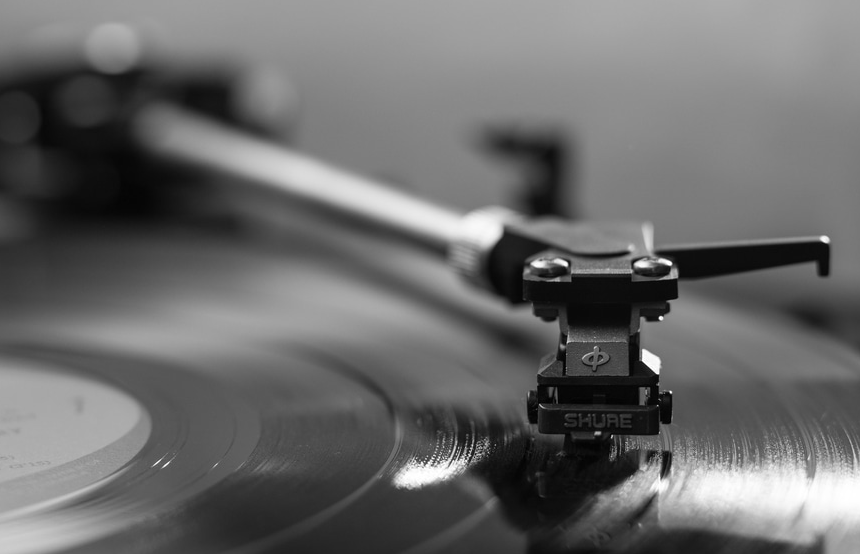
The basics of understanding the different components of a hi-fi system and their audio function
Hi-fi systems are made up of six components.
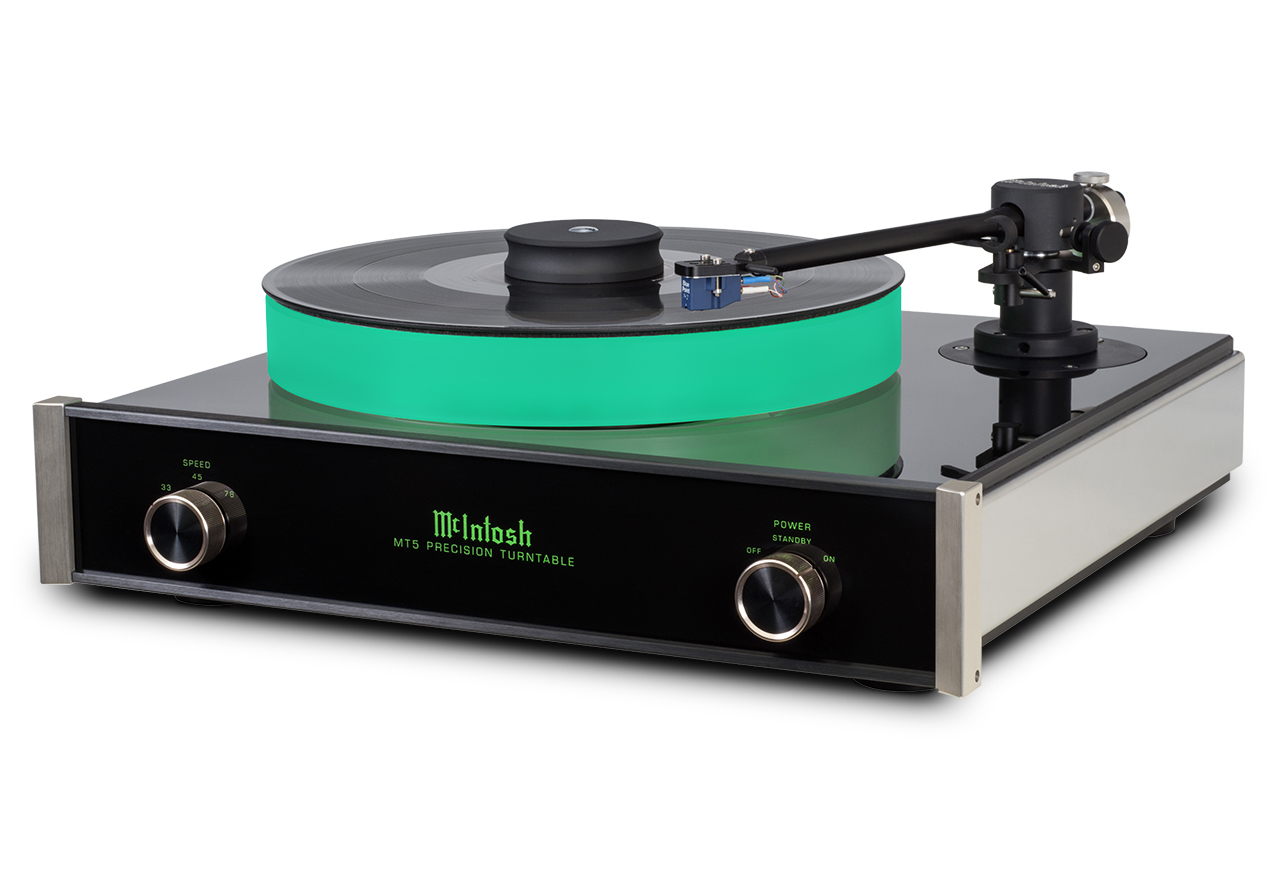
1. Turntables:
The turntable is the platform for the arm and the record. It is the component that assumes the primary responsibility for maintaining a fixed relationship between the record and the cartridge body (needle). The relationship is crucial in recovering any signal from the surface of the record (the cantilever has to move while the cartridge body stands still with the respect to the record surface, in order to generate a signal, hence the turntable is the foremost fundamental component in a hi-fi system.
A very good turntable (even with a budget tone-arm, cartridge, amplifier and speakers) will produce a very acceptable level of performance. Furthermore the performance advantage of the turntable is a fundamental to all the other equipment downstream.
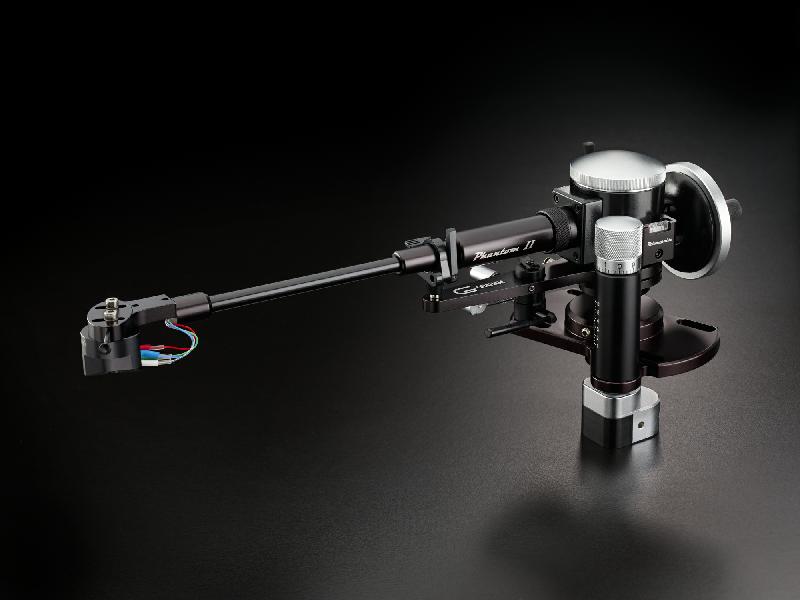
2. Tone arms:
A Tone arm is the interface between the turntable and the cartridge. The capabilities of the tone arm must be able to hold the cartridge still, if not the cartridge wont work.
Tone arms perform an important role on a turntable as they allow the cartridge to faithfully trace the undulations of the vinyl record's groove. They need to do this without introducing vibrations, which would colour the sound and with very low vertical and horizontal friction so that the stylus rides in the center of the groove and doesn't push against one sidewall or the other. Many inexpensive turntables have a tone arm included, which at the best can only be classed as mediocre. High quality turntables can have a variety of tone arms fitted. There have been and still are many brands and designs of tone arms on the market - some extraordinarily expensive.
Most tone arms are pivoted and therefore there is a small amount of tracking distortion, which needs to be minimized by aligning the cartridge correctly. This can be eliminated by parallel tracking tone arms but these are usually quite expensive. Most tone arms have horizontal and vertical bearings but uni-pivot tone arms have a single point that they pivot on. Most modern tone arms are medium mass and work with a wide variety of cartridges, but there are also lightweight and heavier tone arms available.
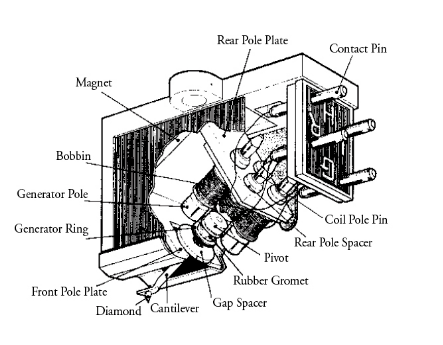
3. Cartridges: Consists of three elements
I. The needle or stylus, which traces the record groves
II. The cantilever, which is the component where the stylus is mounted.
III. The generating system that convers the motion of the stylus and the cantilever to electrical replicas of sound, these electrical impulses are then moved onto the preamplifier and then to power amplifiers (as discussed below)
The cartridges characteristics include:
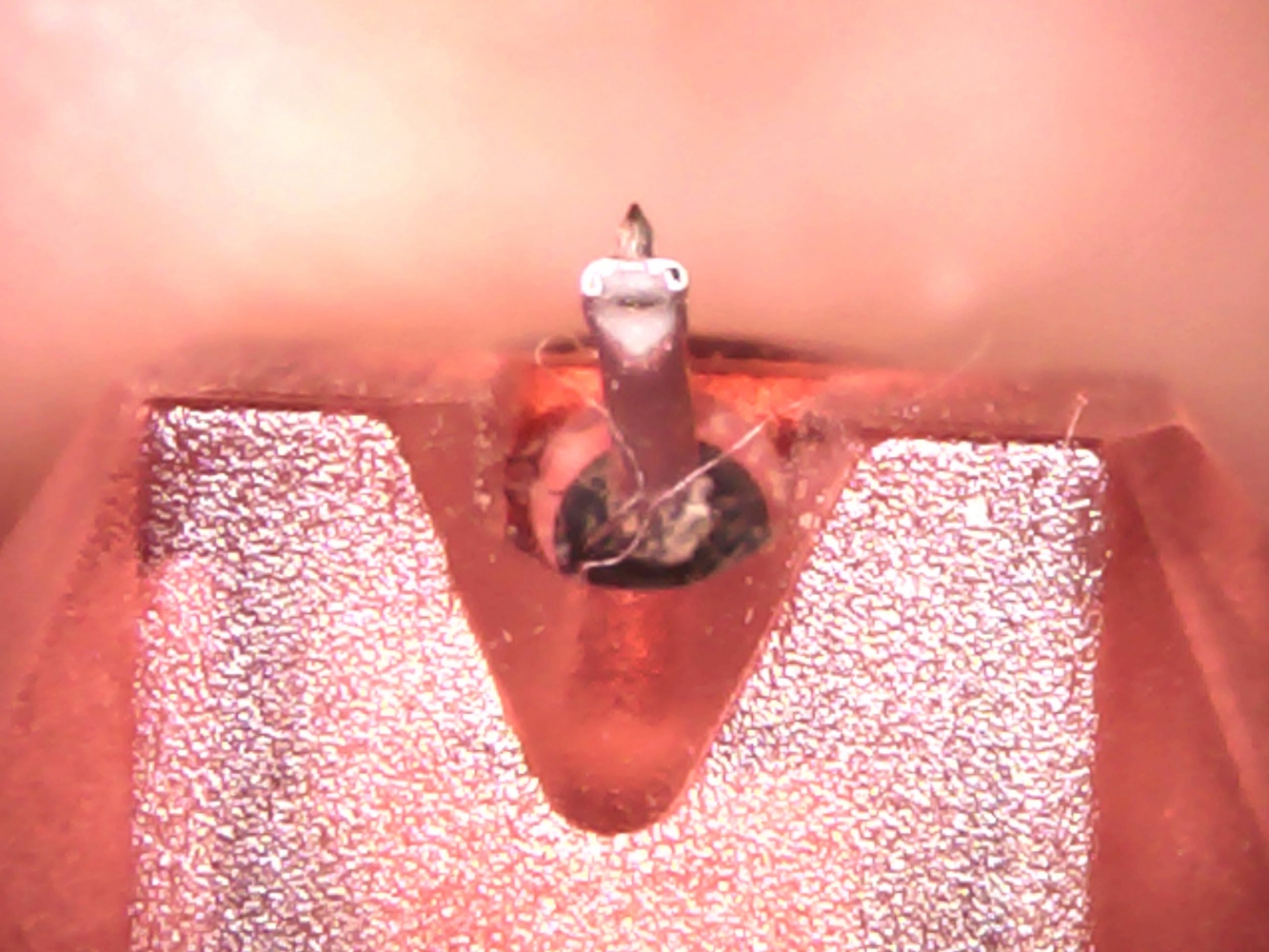
I. The stylus:
The stylus is the only part of the record player to make contact with the record. A force must be exerted by the tone arm to keep the stylus insitu when the record is spinning. The tracking force is normally as low as 1-2g. The higher amount of weight on the stylus increases the amount of pressure on the record thus causing record damage and stylus wear. High-quality styli are made of diamonds due to being the hardest material as its pure carbon therefore it will not wear. A pure diamond stylus is called a nude diamond stylus. Such a stylus provides the lowest possible moving mass and crisper more accurate response especially in the higher frequency register sounds.
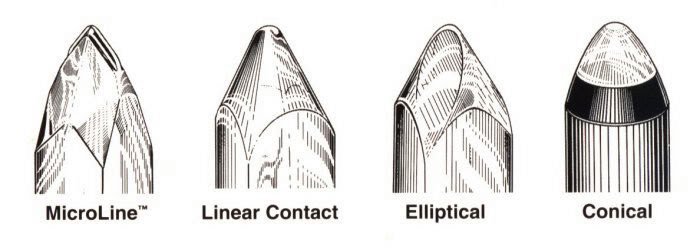
There are three types of stylus shape:
A. The Conical stylus is the simplest, least expensive and most widely used stylus type. Its spherical tip, which has a typical radius of 0.6 mil*, touches the center of the record groove walls. The conical design works best in moderate to lower priced, and older, record players with a tonearm imposing higher tracking forces, or a tonearm that does not feature a cartridge tilt (azimuth) adjustment. Due to their wider grooves, 78 rpm records are played using a much larger conical-type stylus. The average radius of conical styli for 78 rpm records is 2.5 mil – four times larger than the LP record conical styli.
B. The Elliptical stylus has two radii, the front radius being wider than the side radius. This allows the stylus to ride in the center of the groove, like the conical stylus, while the smaller side radius can more accurately track higher frequencies. Compared to the conical stylus, however, the elliptical stylus has a longer vertical contact area and a narrower front to back contact area within the record groove. The elliptical tip follows the groove modulations with more precision, providing improved frequency response, improved phase response, and lower distortion, specifically in the inner grooves of the record.
C. The Line or Linear Contact stylus, next to the MicroLine™ stylus, offers the optimum tip design for accurate tracking of high-frequency passages with minimum abrasion. It has a vertical contact area that is even longer than that of the elliptical stylus. The line contact stylus provides low distortion and low record wear. It should be noted, however, that due to its larger tracing footprint, the line contact stylus may produce more noise on heavily worn records. The line contact tip is used on our higher-end cartridges.
D. The MicroLine™ stylus almost exactly duplicates the shape of the cutting stylus used to produce the original master disc from which records are made. This enables it to track portions of the groove other styli simply cannot reach. The result is extremely accurate tracking of high-frequency passages and ruler-flat frequency response within the audible range. The unique multilevel “ridge” shape of the MicroLine™ tip wears more evenly, allowing greatly extended record and stylus life. The MicroLine™ tip is used on our higher-end cartridges.
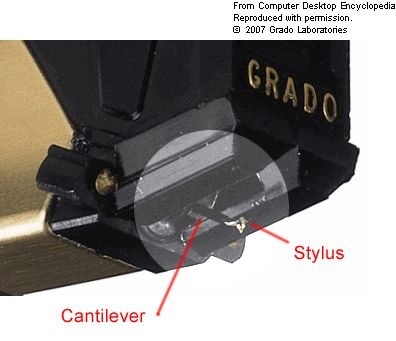
II. The cantilever:
The cantilever transmits the styli motions through the record grooves to the generating system. In order that the cantilever may relay the rapid movements of the stylus, it should be lightweight so it can respond rapidly to the twist and turns of the record grove. But it must be ridged for any bending or flexing would add distortion and sound colouration.
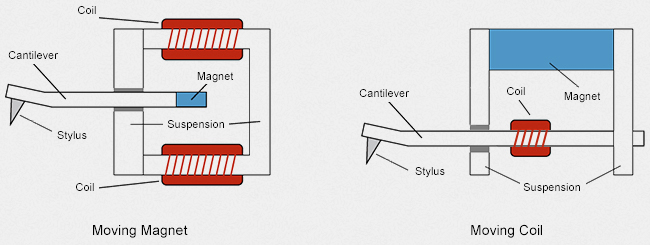
III. The generating system:
Hifi cartridges are based on physics, being when material capable of conducting electricity is set into motion in a magnetic field or when a magnet is moved near such conductive material (copper coils), electrical voltage is produced. The direction and speed of the movement determines the amount of voltage. Therfore the generating system of a cartridge converts the movement of the stylus and the cantilever into a voltage we call the output signal. There are three ways of doing this:
A. Moving magnet: The most common type of generating method is moving magnets. This is done by mounting a magnet on the back of the cantilever, as the motion of the stylus and cantilever causes the magnet to move the magnetic flux changes in the nearby coils and voltage corresponding to the changes is generated. These products cost less to manufacture and have high output. When the stylus wears out you simply replace the old stylus with a new one.
B. Moving iron: A moving iron cartridge is similar in design to a moving magnet cartridge, though the magnet is substituted for a tiny piece of iron (or another ferrous alloy), which is lighter, requiring less downward tracking force and improving tracking accuracy. A larger fixed magnet positioned over the coils then provides the necessary magnetic field. Few manufacturers offer a moving iron cartridge, though because their electrical characteristics are similar they can be used with any system that can accommodate a moving magnet cartridge.
C. Moving coil: These types of generating systems are the most sophisticated (and most expensive) way in generating voltage. Instead of a magnet or iron, it uses carefully hand-wound coils that are mounted onto the cantilever and move in the field of a stationary magnet. Voltage is generated directly with minimal distortion.
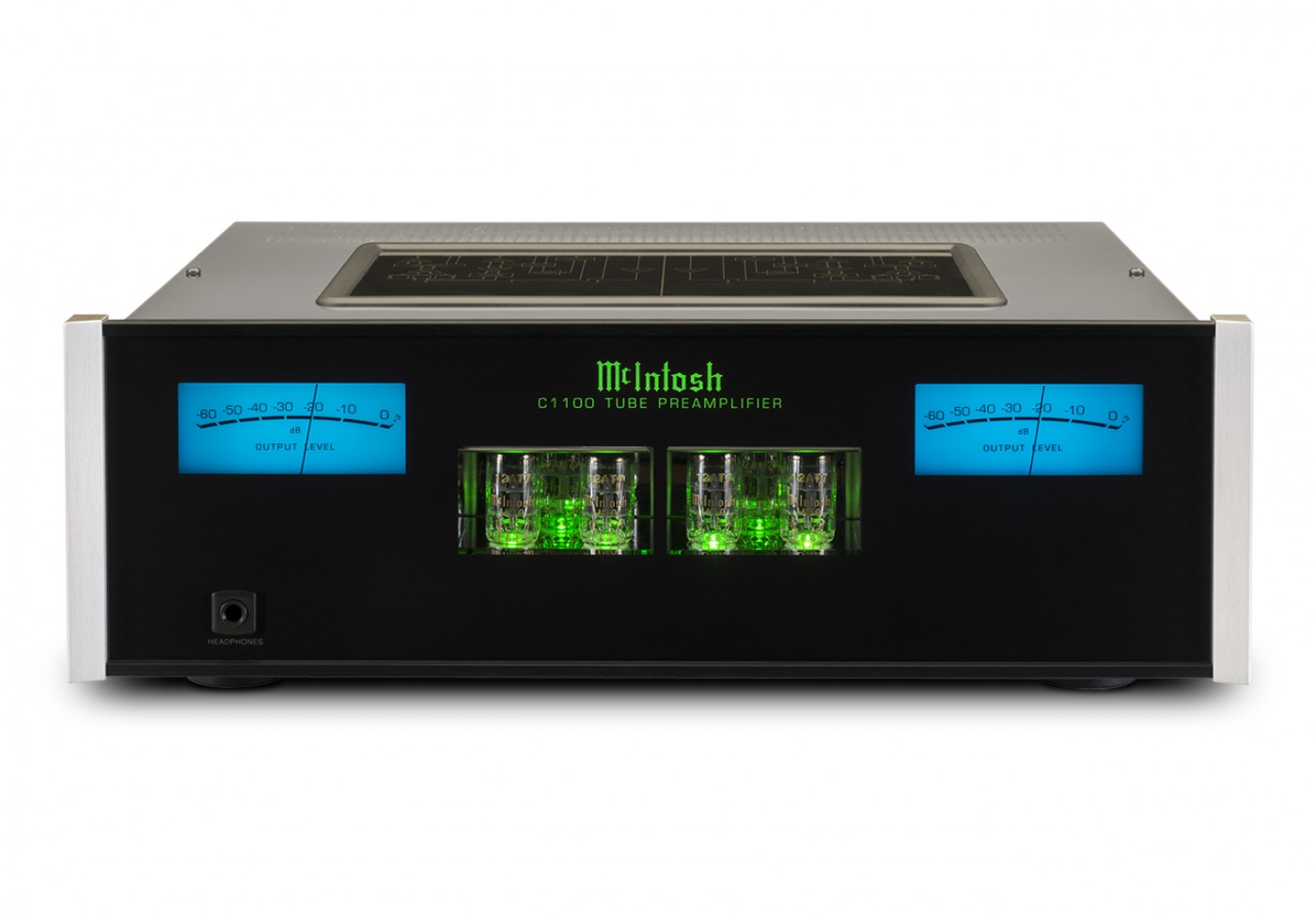
4. Preamplifiers:
A preamplifier (or preamp) is an electronic amplifier that prepares a small electrical signal for further amplification or processing. A preamplifier is often placed close to the sensor to reduce the effects of noise and interference. It is used to boost the signal strength to drive the cable to the main instrument without significantly degrading the signal-to-noise ratio (SNR).
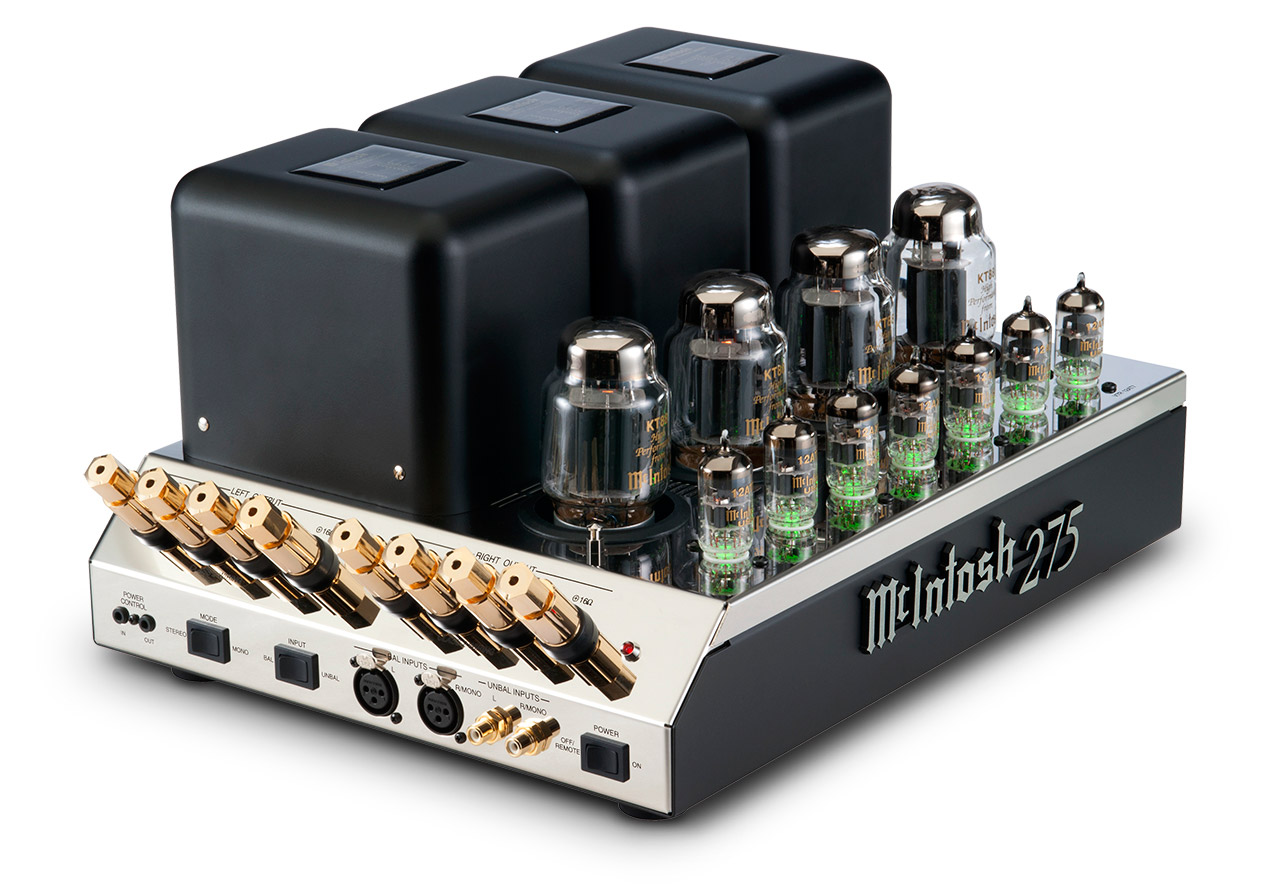
5. Power amplifiers:
An audio power amplifier is an electronic amplifier that amplifies low-power audio signals (signals composed primarily of frequencies between 20 - 20 000 Hz, the human range of hearing) to a level suitable for driving loudspeakers (typically one for each speaker being left and right). It is the final electronic stage in a typical audio playback chain. The preceding stages in such a chain are low power audio amplifiers which perform tasks like pre-amplificatio, equalisation, tone controls, mixing/effects, or audio sources such as record players. Most audio power amplifiers require these low-level inputs to adhere to line levels. While the input signal (from a pre-amplifier) to an audio power amplifier may measure only a few hundred microwatts, its output (from power amplifier) may be tens or hundreds of watts for a home system.
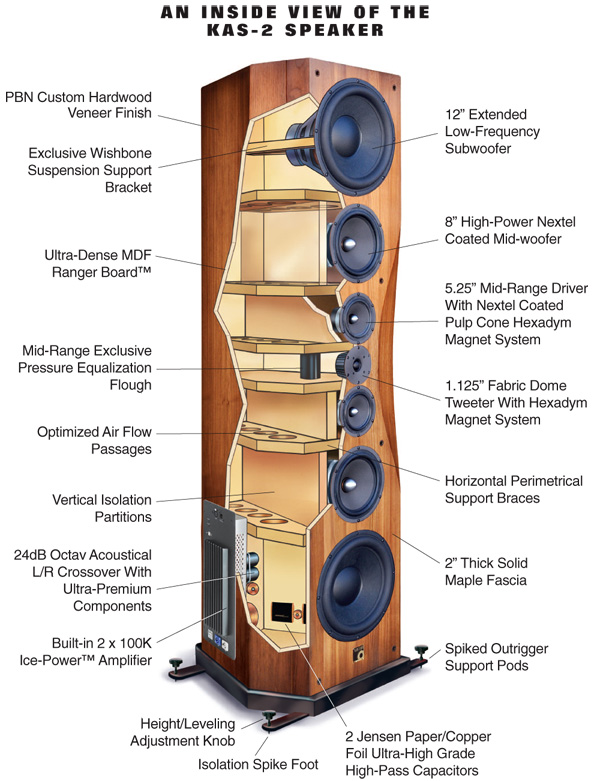
6. Loudspeakers:
The term "loudspeaker" may refer to individual transducers (known as "drivers") or to complete speaker systems consisting of an enclosure including one or more drivers.
To adequately reproduce a wide range of frequencies with even coverage, most loudspeaker systems employ more than one driver, particularly for higher sound pressure level or maximum accuracy.
Individual drivers are used to reproduce different frequency ranges. The drivers are named subwoofers (for very low frequencies); woofers (low frequencies); mid-range speakers (middle frequencies); tweeters (high frequencies); and sometimes super-tweeters, optimized for the highest audible frequencies. The terms for different speaker drivers differ depending on the speaker application include:
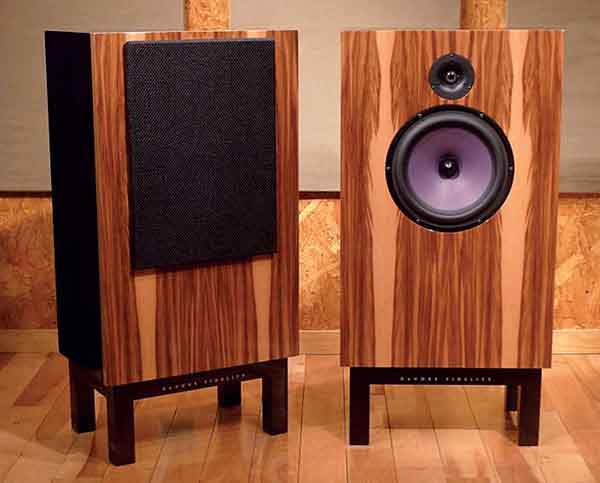
Different varieties of loudspeakers:
I. Two-way systems: In two-way systems there is no mid-range driver, so the task of reproducing the mid-range sounds falls upon the woofer and tweeter.
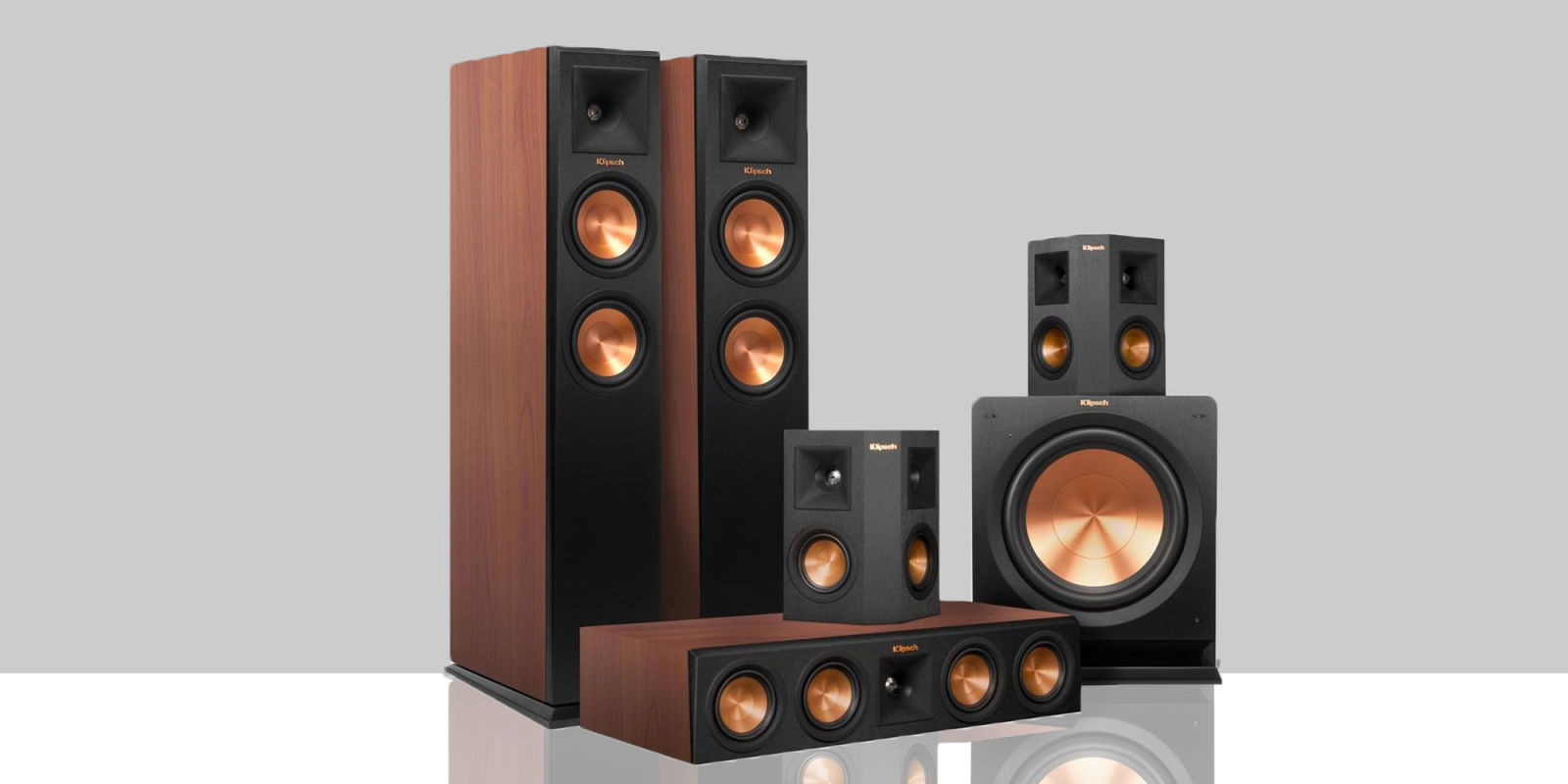
II. Home stereos use the designation "tweeter" for the high frequency driver, while professional concert systems may designate them as "HF" or "highs".When multiple drivers are used in a system, a "filter network", called a crossover, separates the incoming signal into different frequency ranges and routes them to the appropriate driver.
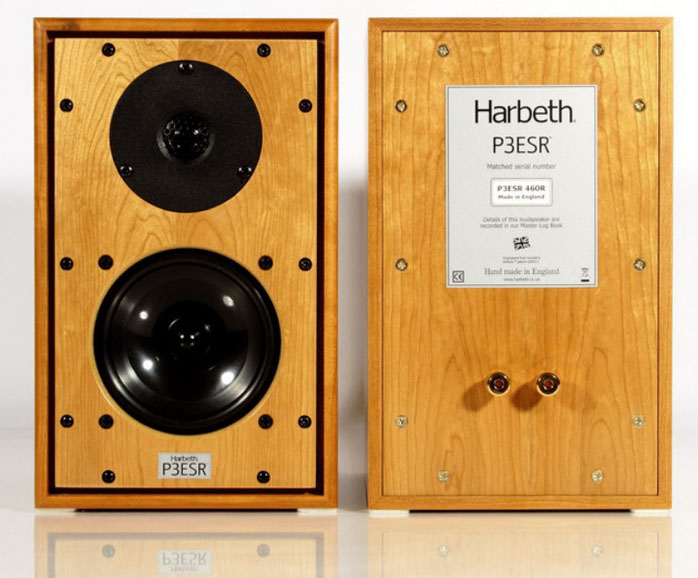
III. N-way speakers: Is a loudspeaker system with n-separate frequency bands is described as a two-way system that has a woofer and a tweeter.
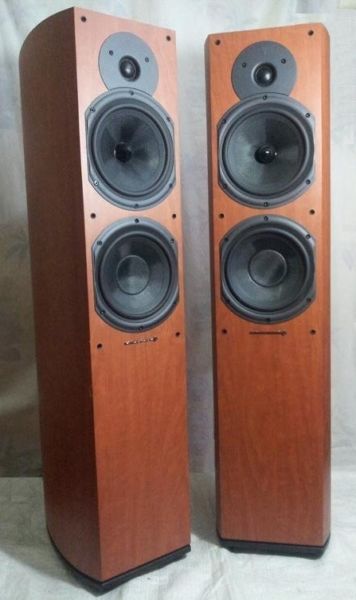
IV. Three-way system: This employs a woofer, a mid-range, and a tweeter.
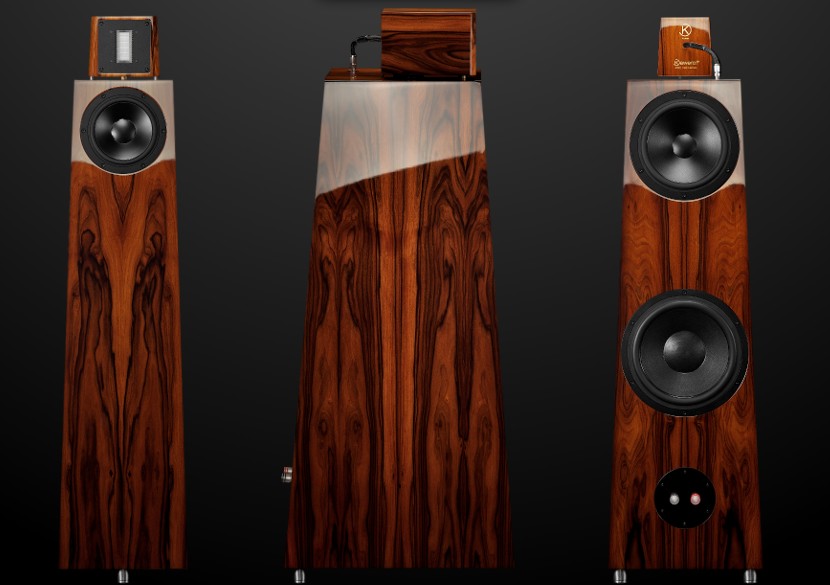
V. Dynamic loudspeakers: These are distinguished from the earlier moving iron speaker, or speakers using piezoelectric or electrostatic systems as opposed to a voice coil that moves through a steady magnetic field.

